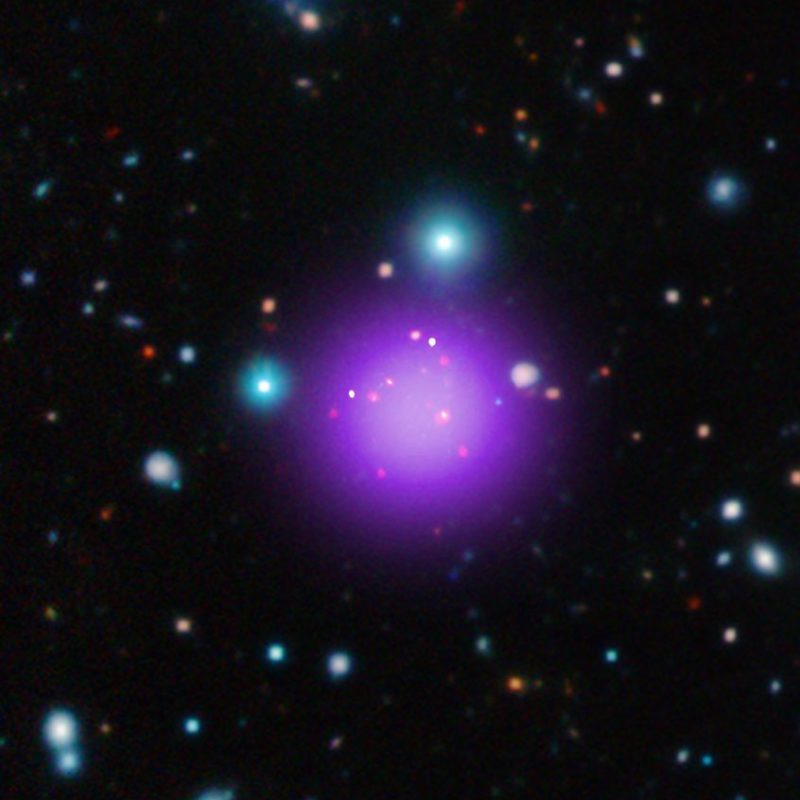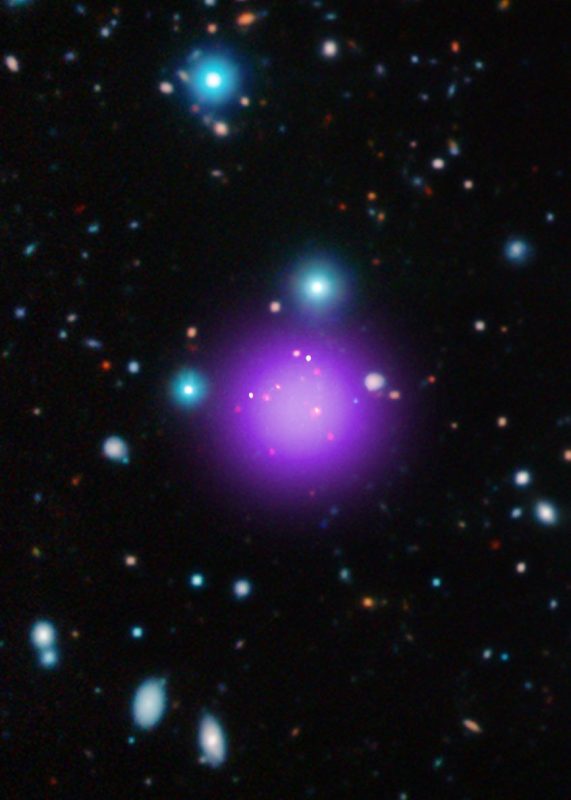
NASA just discovered a galaxy cluster so far away from Earth that it set a new distance record for such discoveries.
Named CL J1001, the cluster is 11.1 billion light-years from Earth, and was found through multiple observations from space telescopes, including NASA’s Chandra X-ray Observatory. The cluster’s core is made of eleven massive galaxies, nine of which are birthing stars at a rate equivalent to over 3,000 Suns forming per year.
This, more than its distance from Earth, is what makes this discovery so impressive. Tao Wang, a representative of the French Alternative Energies and Atomic Energy Commission who led the investigation of this discovery, said that “this galaxy cluster… [is] going through an amazing growth spurt unlike any we’ve ever seen.” In fact, the evidence suggests that CL J1001 was discovered shortly after its birth, and its discovery captures a stage of evolution we’ve never seen before.
Wang’s co-author Alexis Finoguenov agrees, saying that “we think we’re going to learn a lot about the formation of clusters and the galaxies they contain by studying this object.”
Read NASA’s official statement here.
This article was featured in the InsideHook newsletter. Sign up now.























